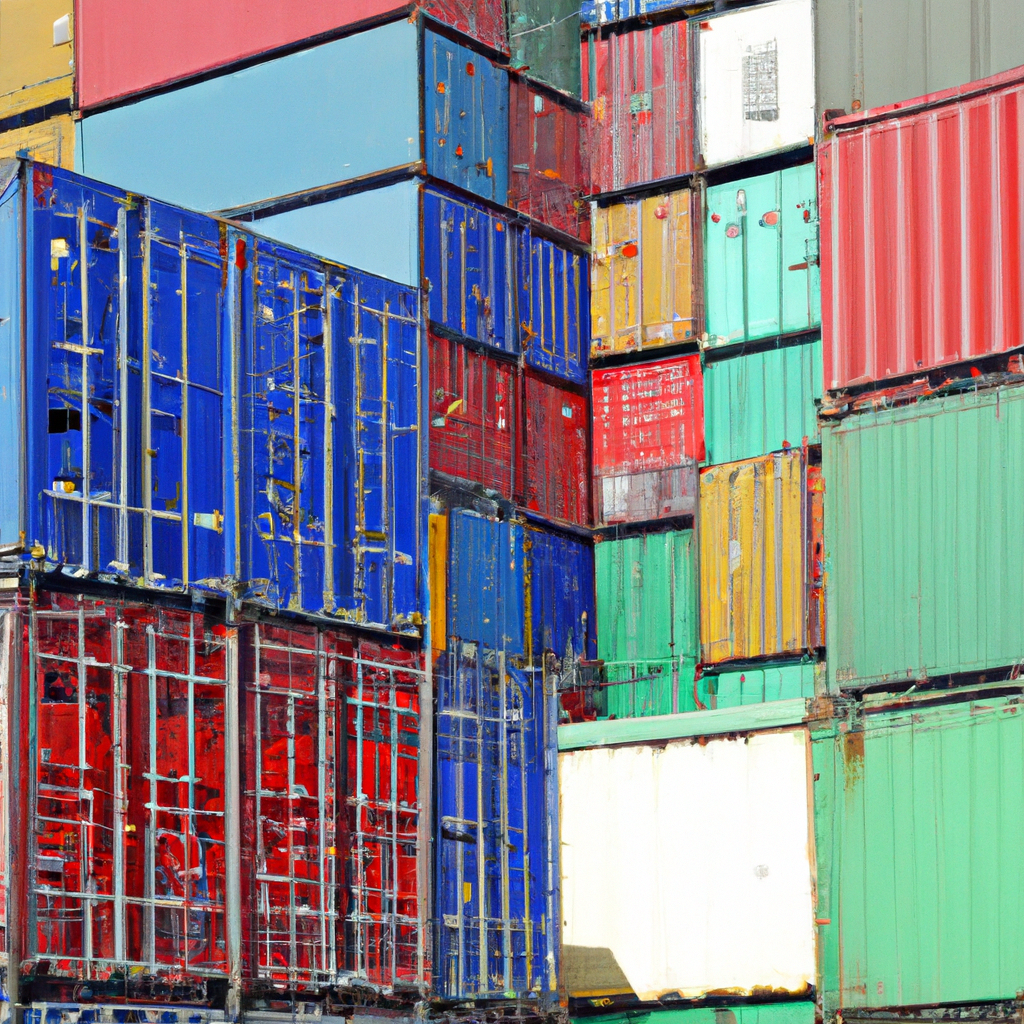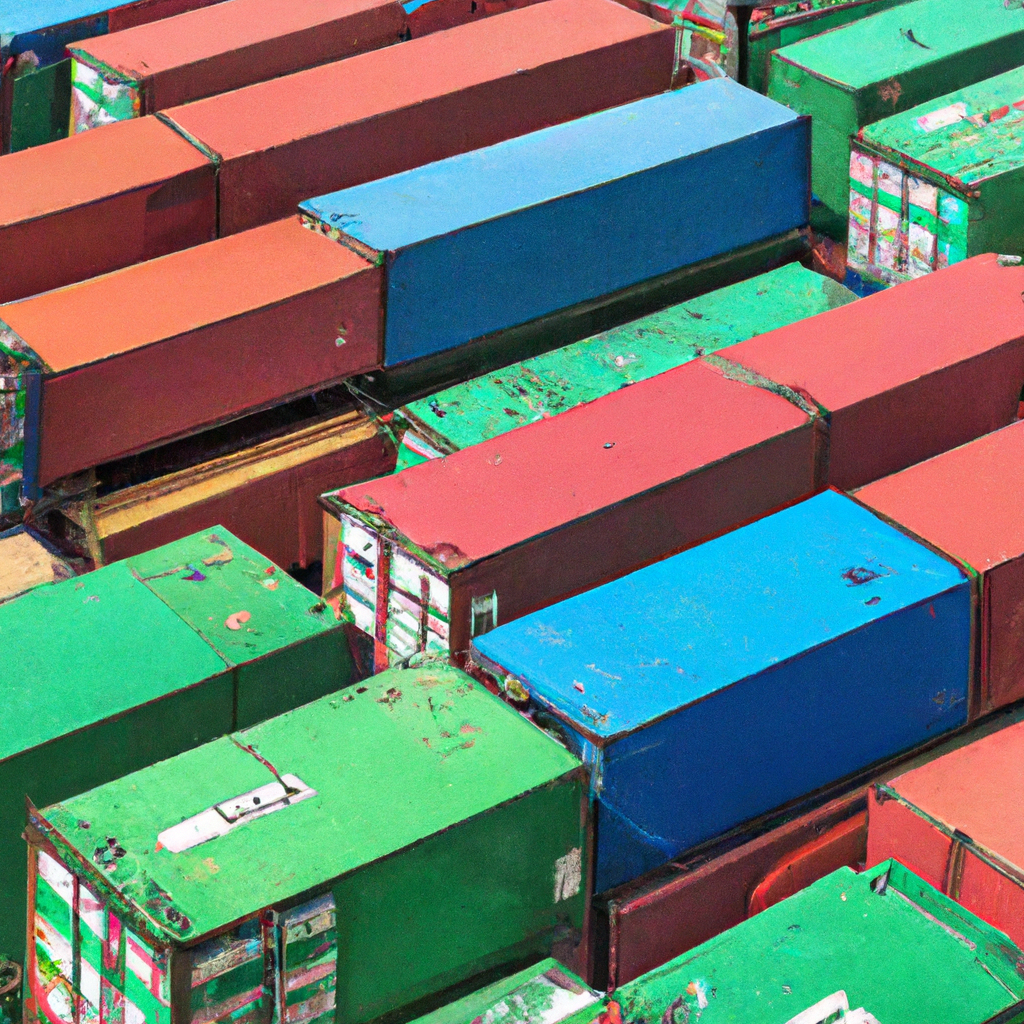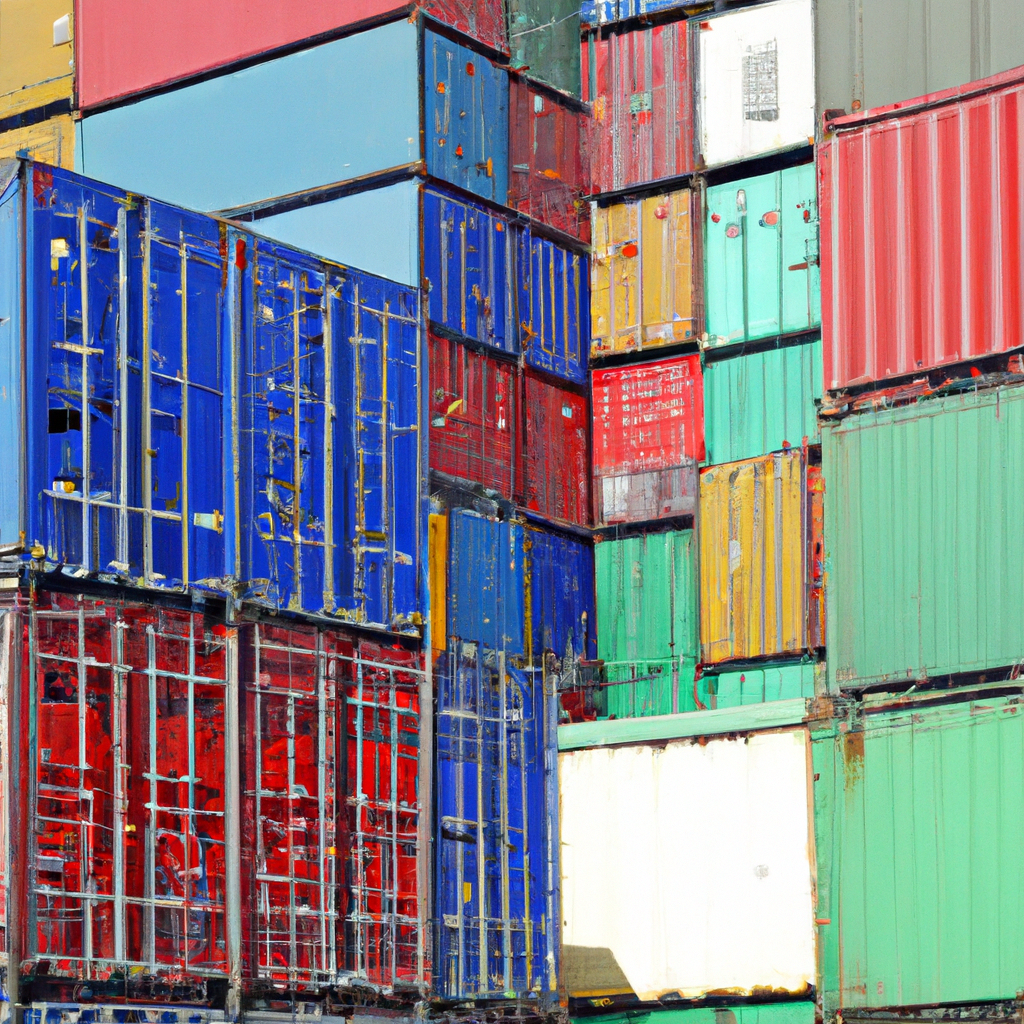
You’re about to embark on a journey of finding the perfect containers for all your storage needs. Whether it’s organizing your kitchen, decluttering your workspace, or keeping your belongings safe during a move, selecting the right containers can make all the difference. With a wide variety of options available, from plastic bins to woven baskets, this article will guide you in making the best choice for your specific needs. It’s time to say goodbye to chaos and hello to a beautifully organized space, so let’s get started on finding the perfect containers for you!

Consider the material
Plastic
When choosing containers, one of the most common options is plastic. Plastic containers are lightweight, affordable, and come in a variety of shapes and sizes. However, it is important to consider the potential drawbacks of plastic containers. Plastic can degrade over time and may not be as durable as other materials. Additionally, some plastic containers contain harmful chemicals that can leach into your food. If you choose to use plastic containers, make sure to select high-quality, BPA-free options and replace them regularly.
Glass
Glass containers are a popular choice for many people due to their durability and versatility. Unlike plastic, glass containers do not degrade over time and are not prone to absorbing odors or stains. They are also microwave and freezer safe, making them a convenient option for reheating or storing leftovers. Glass containers are a bit heavier than plastic, but their longevity and health benefits make them a worthwhile investment.
Metal
Metal containers, such as stainless steel, are known for their durability and resistance to rust and corrosion. They are often used for storing dry goods or items that do not require airtight seals. Metal containers are also great at retaining temperature, so they are ideal for keeping food hot or cold for longer periods. However, it’s important to note that metal containers may not be suitable for use in the microwave.
Ceramic
Ceramic containers add a touch of elegance to your kitchen and are perfect for serving and storing food. They are typically oven-safe and can be used to cook and reheat meals. Ceramic containers are also great at retaining temperature, which is perfect for keeping food warm at the dining table. However, they can be fragile, so it’s important to handle them with care to avoid breakage.
Stainless steel
Stainless steel containers are incredibly durable and resistant to rust and corrosion. They are perfect for storing both dry goods and liquids, as they provide an airtight seal. Stainless steel containers are also lightweight and easily portable, making them great for on-the-go meals or snacks. Additionally, they are dishwasher safe, which makes cleaning a breeze.
Wooden
Wooden containers offer a unique and natural aesthetic to your kitchen. They are often used for storing dry goods, such as coffee beans or grains. However, wooden containers require proper maintenance, as they can absorb odors and stains. Regular cleaning and conditioning are necessary to keep wooden containers in good condition.
Biodegradable
If you are environmentally conscious, biodegradable containers are a great option. These containers are made from materials that can naturally break down over time, reducing their impact on the environment. Biodegradable containers often come in the form of compostable or plant-based materials. They can be a bit more expensive than other options, but their eco-friendly nature makes them worth considering.
Evaluate size and capacity
Identify your needs
Before selecting containers, it’s important to identify your specific needs. Consider the types of food you regularly store or pack, and how much you typically need to store. This will help you determine the appropriate size and capacity for your containers.
Consider portion sizes
If you frequently portion out meals or snacks, consider containers that are designed to hold individual portions. This can help with portion control and make it easier to grab a pre-portioned meal on the go.
Evaluate storage space
Take into account the space available in your kitchen cabinets, pantry, or refrigerator. Choose containers that can fit comfortably in your storage spaces, keeping in mind that some containers may stack or nest for more efficient storage.
Assess weight and transportation
Consider how often you will be transporting your containers. If you plan on taking them to work or on outings, opt for lightweight containers that are easy to carry around. Additionally, containers with secure lids will help prevent leaks and spills during transportation.

Analyze functionality and usability
Easy-open lids
Look for containers with lids that are easy to open and close. This will ensure efficiency and convenience when accessing your stored food. Lids with secure locking mechanisms can help keep your food fresh and prevent leaks.
Airtight and leak-proof capabilities
Ensuring that your containers have airtight and leak-proof lids will help maintain freshness and prevent spills. This is particularly important when storing liquids or foods with sauces or dressings.
Microwave and freezer safe
If you plan on reheating or storing food in the freezer, make sure your containers are microwave and freezer safe. This will allow you to safely heat up your meals or store leftovers without worrying about damaging the containers.
Nesting and stackability
Containers that can nest or stack together are great for maximizing storage space. They can help keep your kitchen organized and make it easier to find the container you need.
Dishwasher safe
Consider whether the containers are dishwasher safe. This will make cleaning a breeze and save you time and effort in hand washing. Always check the manufacturer’s guidelines to ensure your containers are dishwasher safe.
Visibility and labeling
Containers with clear or transparent sides allow you to easily see the contents without opening the lid. This can be particularly helpful when searching for specific items in your pantry or fridge. Additionally, containers that come with labeling options or writable surfaces can help you stay organized and easily identify the foods stored inside.
Assess durability and longevity
Inspect material strength
When choosing containers, assess the strength of the material. Ensure that the containers are sturdy enough to withstand regular use and potential mishandling.
Check for cracks or damage
Inspect containers for any cracks or damage before purchasing. Damaged containers may not provide an airtight seal or may be more susceptible to breaking.
Consider resistance to heat and cold
Consider the temperature range that the containers can withstand. Ensure they are suitable for both hot and cold food storage, particularly if you plan on using them for freezer or oven storage.
Evaluate wear and tear over time
Choose containers that have a reputation for longevity. Read reviews and testimonials from other customers to get an idea of how well the containers hold up over time. Containers that show signs of wear and tear may need to be replaced more frequently.

Review cleaning and maintenance requirements
Ease of cleaning
Choose containers that are easy to clean to save time and effort. Containers with smooth surfaces and no hard-to-reach crevices will make cleaning a breeze.
Dishwasher compatibility
If you rely on your dishwasher for cleaning, ensure that the containers are dishwasher compatible. Keep in mind that some containers may need to be placed on the top rack or have specific instructions for dishwasher use.
Avoiding staining and odor retention
Some materials, such as plastic, can absorb odors and stains over time. Consider materials that are resistant to staining and odor retention to maintain the quality and appearance of your containers.
Maintaining seals and gaskets
Containers with removable seals or gaskets may require extra attention during cleaning and maintenance. Ensure that you are aware of any specific care instructions to maintain the integrity of the seals and prevent leaks.
Consider cost and budget
Evaluate upfront cost
Consider the initial cost of the containers when making your decision. Different materials and brands will vary in price, so choose options that fit within your budget.
Consider long-term investment
While some containers may be more expensive upfront, they may be a worthwhile investment in the long run. Consider the durability and longevity of the containers to determine their overall value for money.
Assess replacement or additional costs
Certain containers may require additional accessories or replacement parts, such as extra lids or gaskets. Take into account these potential costs when assessing the overall expense of using and maintaining the containers.
Consider the frequency of use
Think about how often you will be using the containers. If you plan on using them daily or multiple times a week, it may be worth investing in higher-quality containers that can withstand frequent use.

Examine environmental impact
Avoid single-use plastics
Single-use plastics contribute to plastic waste and environmental pollution. Opt for reusable containers instead to minimize your impact on the environment.
Opt for recyclable materials
Choose containers made from materials that are recyclable. This will allow you to responsibly dispose of them once they reach the end of their lifespan.
Consider compostability
If you have access to composting facilities, consider using containers made from compostable materials. These containers can be broken down naturally and reduce waste.
Assess the carbon footprint
Take into account the carbon footprint associated with the production and transportation of the containers. Look for brands that prioritize sustainable practices and environmentally friendly manufacturing processes.
Account for storage and organization
Consider stackability and nesting
Containers that can stack or nest together are great for efficient storage. They take up less space and help keep your kitchen organized.
Evaluate space-saving options
Look for containers that are designed to maximize storage space. Containers with square or rectangular shapes often fit better in cabinets or fridge shelves than round containers.
Assess drawer and cabinet compatibility
If you plan on storing containers in drawers or cabinets, make sure the containers are compatible with the dimensions of your storage spaces. Measure the available space to ensure the containers will fit.
Identify the need for modular or interchangeable designs
Modular or interchangeable designs allow you to mix and match different container sizes and shapes. This can help you create a customized storage system that suits your specific needs.

Think about aesthetics and design
Consider the visual appeal
Choose containers that appeal to your personal taste and complement your kitchen decor. Containers that visually align with your style will make your kitchen look cohesive and inviting.
Evaluate compatibility with kitchen decor
Consider the materials, colors, and shapes of the containers and how they fit in with your overall kitchen decor. Coordinate or contrast them with your existing kitchen accessories for a pleasing aesthetic.
Assess the attractiveness of presentation
If you plan on using containers for serving or presenting food, consider how visually appealing they are. Containers with elegant or decorative designs can enhance the presentation of your meals or snacks.
Identify personal style preferences
Everyone has different style preferences, so choose containers that align with your personal taste. Whether you prefer minimalist or bold designs, there are options available to suit your style.
Research customer reviews and recommendations
Read online reviews
Before making a purchase, it’s a good idea to read online reviews. Customers often provide honest feedback about the quality, functionality, and durability of the containers.
Check customer ratings and feedback
In addition to reading reviews, check the product ratings and specific feedback from customers. This can give you a better understanding of the overall satisfaction level and potential issues to watch out for.
Consult friends and family
Ask friends or family members who have experience with different containers for their recommendations. They can provide valuable insights and share their own experiences with a particular brand or type of container.
Seek expert opinions or recommendations
If you are still unsure about which containers to choose, seek out expert opinions or recommendations. Culinary professionals, nutritionists, or home organizing experts may have valuable insights and advice to help you make an informed decision.
In conclusion, choosing the right containers involves considering a variety of factors such as the material, size, functionality, durability, cleaning requirements, cost, environmental impact, storage and organization, aesthetics, and customer reviews. By evaluating these different aspects, you can find the perfect containers that meet your specific needs and preferences. Remember to prioritize factors like durability, functionality, and sustainability to ensure that your containers are not only practical but also long-lasting and eco-friendly. Happy container shopping!







